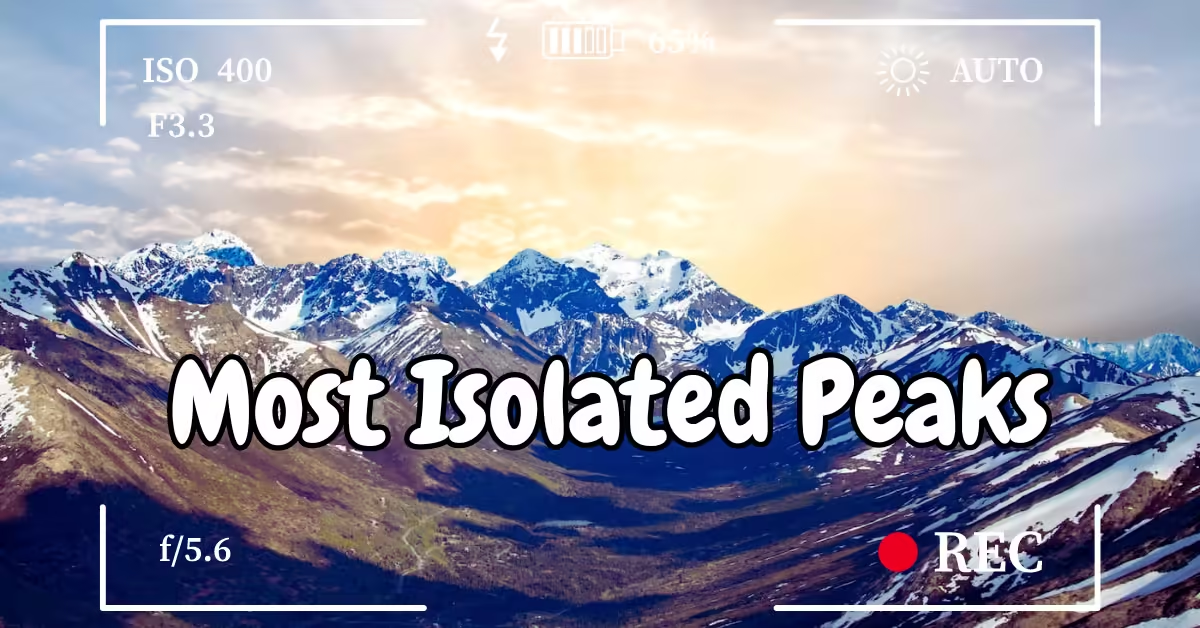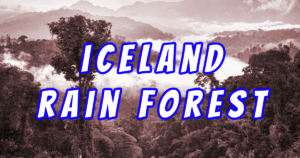Alaska is home to some of the most breathtaking and remote mountain ranges in the world. For adventurers, mountaineers, and nature enthusiasts seeking solitude and untouched wilderness, the most remote mountains in Alaska offer unparalleled challenges and rewards. In this post, we’ll explore which mountains in Alaska are the most remote, breaking down 5 epic ranges that stand out as some of the most isolated and rugged places on Earth.
1. Introduction to Alaska’s Remote Mountain Wilderness
When people think of Alaska, images of vast, uninhabited wilderness come to mind. Among the most awe-inspiring features of this wilderness are Alaska’s towering mountain ranges, many of which remain remote and difficult to access. These ranges are characterized by their rugged landscapes, sparse human settlements, and expansive areas of untouched nature. For those seeking adventure, isolation, and natural beauty, Alaska’s mountains are a must-visit destination.
2. What Makes a Mountain Remote in Alaska?
In Alaska, a mountain’s remoteness can be defined by several key factors. The lack of accessibility, due to either harsh terrain or lack of roads, is a primary characteristic. Many of Alaska’s mountains can only be reached by bush plane or multi-day treks, making them ideal for those looking to escape the modern world. Additionally, the surrounding wilderness and absence of human habitation contribute to the sense of isolation, with many of these mountains lying deep within national parks or protected areas.
Another aspect that makes these mountains remote is the sheer distance from civilization. Towns are few and far between in Alaska, and some of these mountains are hundreds of miles away from the nearest road or human settlement.
3. Top 5 Mountain Ranges: Which Mountains in Alaska Are the Most Remote?
Alaska is home to some of the most remote and untouched mountain ranges in the world. Below are the top five most remote mountain ranges in Alaska that adventurers dream of exploring:
- Brooks Range – Located in northern Alaska, this range is remote, rugged, and largely untouched by human hands.
- Alaska Range – Home to Denali, the highest peak in North America, this range is a challenge even for the most experienced climbers.
- Wrangell-St. Elias Range – As part of the largest national park in the U.S., this range is incredibly difficult to access and remains largely unexplored.
- Chugach Mountains – Close to Anchorage but still remote due to its sheer size and harsh weather conditions, these mountains are a favorite for those seeking adventure.
- Talkeetna Mountains – A range known for its isolated beauty, often overshadowed by the larger Alaska Range, but equally difficult to access.
4. The Brooks Range: Alaska’s Northern Wilderness
Keywords: Brooks Range in Alaska, Rugged mountains in Alaska
The Brooks Range is located in the far north of Alaska, stretching over 700 miles from the Yukon border to the Chukchi Sea. Known for its rugged peaks and vast wilderness, the Brooks Range is one of the most remote areas in North America. The range is part of the Arctic National Wildlife Refuge, a protected area that has minimal human presence. It’s a landscape dominated by tundra, glaciers, and wild rivers, making it a prime location for those looking to experience Alaska’s wild frontier.
Access to the Brooks Range is limited. There are no roads leading into the heart of this range, and most visitors rely on bush planes to reach the area. Adventurers who visit the Brooks Range can expect solitude and challenges, as the area is teeming with wildlife but lacks infrastructure.
5. Reaching the Remote Alaska Range
The Alaska Range is home to some of the most famous and difficult-to-access peaks in the world, including Denali. Denali, at 20,310 feet, is the highest mountain in North America, and the surrounding range is equally dramatic. The Alaska Range stretches across the southern part of the state, and despite its popularity with climbers, much of the range remains off the grid and unexplored.
Reaching the remote parts of the Alaska Range often requires a multi-day trek through challenging terrain or a flight into remote locations. The range is surrounded by glaciers, deep valleys, and an array of wildlife, making it a top destination for serious adventurers and mountaineers.
6. The Mystery of the Wrangell-St. Elias Range
The Wrangell-St. Elias Range is one of the most remote and least explored mountain ranges in Alaska, located within Wrangell-St. Elias National Park—the largest national park in the U.S. This range is part of a UNESCO World Heritage site and is home to some of the most massive glaciers in the world. Despite its size, the Wrangell-St. Elias Range remains mysterious and untouched, with large sections still unexplored by humans.
What makes this range particularly intriguing is its inaccessibility. Few roads lead into the national park, and much of the range can only be accessed by air or foot. For adventurers seeking solitude and a true wilderness experience, the Wrangell-St. Elias Range offers the ultimate remote escape.
If you’re looking for more hidden gems to add to your adventure bucket list, don’t miss the incredible beauty and outdoor experiences waiting for you in Swan Valley, Idaho. Check out 5 Incredible Reasons to Visit Swan Valley Idaho for Your Next Adventure!
7. Why Adventurers Seek Alaska’s Remote Mountains
For many adventurers, Alaska’s remote mountain ranges represent the ultimate challenge. The combination of rugged terrain, unpredictable weather, and complete isolation attracts those looking for a truly off-the-grid experience. Whether it’s mountaineers seeking to scale some of the tallest peaks in North America, or backcountry enthusiasts looking to escape the modern world, Alaska offers a raw and untamed wilderness like no other.
In addition to the physical challenges, these remote mountains are homein the wilderness of Alaska, the untouched beauty and remoteness of the mountain ranges offer adventurers a unique, unmatched experience. Alaska’s remote mountains, such as the Brooks Range, Alaska Range, and Wrangell-St. Elias Range, are known for their isolation and challenge, drawing mountaineers, backcountry enthusiasts, and thrill-seekers. From the rugged Brooks Range in the north to the towering Alaska Range and the mysterious Wrangell-St. Elias, these mountains are perfect for those seeking solitude and a connection with nature.
Adventurers often seek these areas for their breathtaking scenery, solitude, and challenge. Scaling these mountains demands experience and preparation, but for many, the reward of reaching untouched places and immersing oneself in pristine wilderness makes it worth every effort. The experience offers more than just physical challenges; it’s about mental endurance and the awe-inspiring feeling of being truly off the grid.
8. The Chugach Mountains: Alaska’s Coastal Wilderness
Keywords: Chugach Mountains, Remote coastal mountains in Alaska
The Chugach Mountains are one of Alaska’s most stunning and remote coastal ranges, stretching along the southern coast and encompassing Prince William Sound. Despite being relatively close to Anchorage, the Chugach Mountains’ vast size, rugged terrain, and harsh weather conditions make them difficult to access and ideal for adventurers seeking isolation. The range is home to massive glaciers, pristine fjords, and dense forests, creating a diverse and challenging environment for exploration.
Adventurers in the Chugach Mountains can experience a unique combination of alpine and coastal wilderness, where wildlife such as bears, moose, and eagles thrive. The remoteness of certain parts of the range ensures a solitude that is hard to find elsewhere, making it an excellent destination for backcountry skiing, hiking, and mountaineering.
Conclusion: Alaska’s Untouched Wilderness and Remote Mountains
In conclusion, Alaska’s remote mountains represent the pinnacle of untouched wilderness and offer unparalleled opportunities for adventure and solitude. The rugged terrain, difficult accessibility, and wild beauty of mountain ranges like the Brooks Range, Alaska Range, and Wrangell-St. Elias provide a raw and genuine experience for adventurers seeking to challenge themselves and connect with nature. These ranges stand as a testament to Alaska’s vast, wild frontier—a world far removed from modern civilization, waiting to be explored by those brave enough to venture off the beaten path.
FAQs About Remote Mountains in Alaska
- Which mountains in Alaska are the most remote?
- Some of the most remote mountains in Alaska include the Brooks Range, Wrangell-St. Elias Range, and parts of the Alaska Range, such as Denali.
- What makes a mountain range remote in Alaska?
- Remoteness is defined by factors such as lack of accessibility, distance from civilization, and minimal human activity, often requiring bush planes or long treks to access.
- Why are the Brooks Range and Alaska Range considered remote?
- The Brooks Range and parts of the Alaska Range are isolated due to their rugged terrain, extreme weather, and lack of roads, making them difficult to access for most people.
- How can I visit Alaska’s remote mountains?
- Many remote mountain ranges in Alaska can only be reached via bush plane or extended hikes. There are also guided tours for more accessible areas, but for the most remote places, independent adventuring is key.
- What is the best time to explore remote mountains in Alaska?
- The summer months from June to August are ideal, as the weather is milder and the daylight hours are longer, making it easier and safer to explore.
- What should I pack for an adventure in Alaska’s remote mountains?
- Packing for Alaska’s wilderness requires extensive planning. Essential gear includes cold-weather clothing, camping gear, food supplies, and satellite communication devices in case of emergencies.
- What wildlife can be encountered in these remote mountain ranges?
- Alaska’s remote mountains are home to a variety of wildlife, including grizzly bears, caribou, wolves, moose, and golden eagles.
- How challenging are the remote mountain ranges in Alaska?
- The remoteness, unpredictable weather, and rugged terrain make these mountain ranges extremely challenging and only suitable for experienced adventurers.
- Are there any guided tours for remote Alaska mountain ranges?
- While there are guided expeditions for certain parts of the Alaska Range, such as Denali, other remote areas, such as the Brooks Range, may require self-guided exploration or specialized adventure tours.
- Why are Alaska’s remote mountains so attractive to adventurers?
- Alaska’s remote mountains offer a true wilderness experience, providing adventurers with solitude, breathtaking views, and the opportunity to explore untouched landscapes far from the modern world.

Joseph Bush is a seasoned writer and researcher with over 7 years of experience covering a wide range of general topics, from lifestyle and technology to business and current events. He is dedicated to producing fact-checked, reader-friendly content that informs, engages, and empowers readers.
Throughout his career, Joseph has followed strict editorial guidelines, relied on reputable sources, and ensured every article meets the highest standards of accuracy and clarity. His expertise spans multiple fields, allowing him to explain complex topics in a way that’s easy to understand.
Passionate about continuous learning, Joseph stays updated on industry trends and best practices to deliver trustworthy, well-rounded insights. Readers can rely on his work for its credibility, depth, and real-world relevance.




